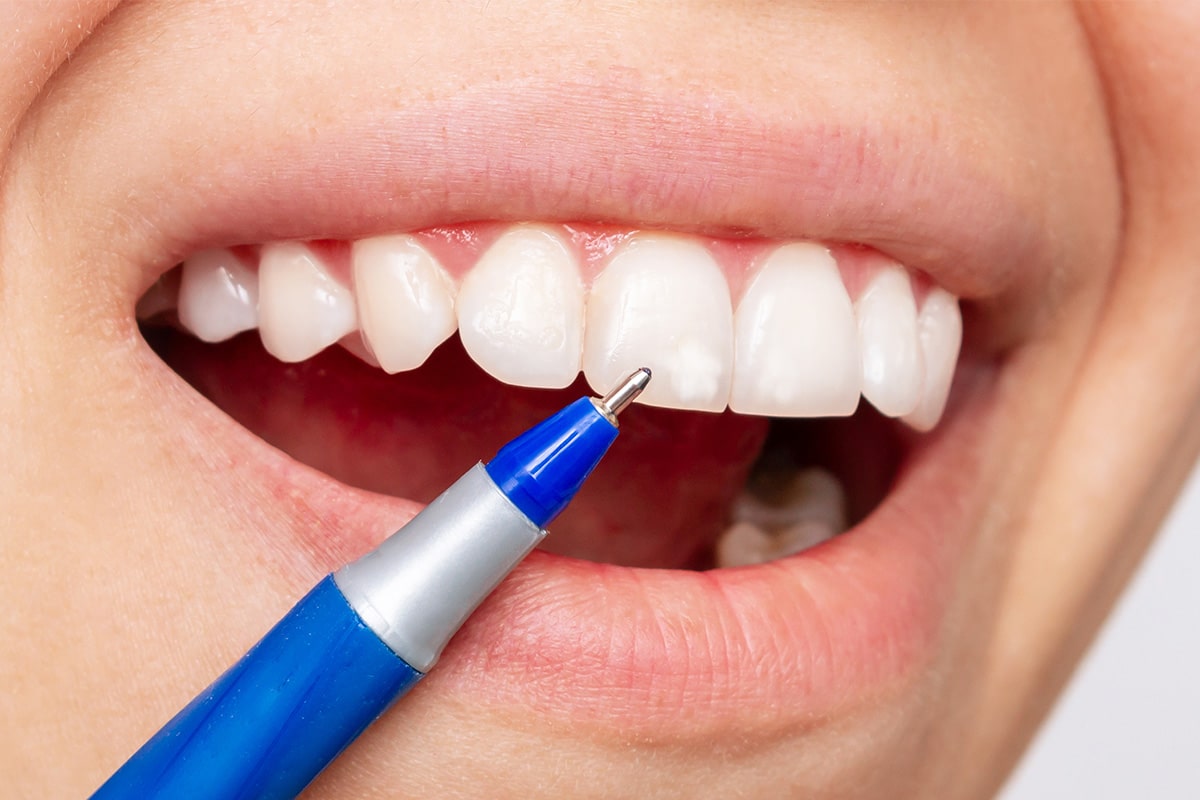
What is dental fluorosis? Dental fluorosis is a condition that affects the teeth due to excessive fluoride intake during the early years of life. How does it manifest? It often appears as faint white lines or streaks on the enamel, but in severe cases, it can cause brown stains and surface irregularities. Why is it important to know about? Understanding dental fluorosis helps in making informed decisions about fluoride use in dental care products and drinking water. Who is at risk? Children under eight years old are most susceptible since their teeth are still developing. Can it be prevented? Yes, by monitoring fluoride levels in water and using appropriate toothpaste amounts.
Key Takeaways:
- Dental fluorosis is caused by excessive fluoride intake during childhood, leading to changes in tooth appearance. Prevention involves monitoring fluoride sources and educating parents to reduce the risk.
- Treatment options for dental fluorosis include teeth whitening, dental bonding, and veneers to improve the appearance of affected teeth. Regular dental check-ups are essential for managing its effects.
What is Dental Fluorosis?
Dental fluorosis is a condition affecting the teeth caused by excessive fluoride intake during the early years of life. It results in changes to the appearance of the tooth enamel, ranging from mild discoloration to severe staining and pitting.
- Dental fluorosis occurs when children consume too much fluoride while their teeth are still forming beneath the gums.
- The condition typically affects children under the age of eight, as this is when permanent teeth are developing.
- Fluorosis can cause white streaks or spots on the teeth, which are often the first signs of the condition.
- In severe cases, fluorosis can lead to brown stains and surface irregularities on the teeth.
- The severity of fluorosis is classified into different categories: very mild, mild, moderate, and severe.
Causes of Dental Fluorosis
Understanding the causes of dental fluorosis can help in preventing the condition. Here are some common causes:
- Drinking water with high levels of fluoride is a primary cause of dental fluorosis.
- Swallowing fluoride toothpaste while brushing can contribute to excessive fluoride intake in children.
- Consuming fluoride supplements without professional guidance can increase the risk of fluorosis.
- Certain foods and beverages, such as tea and processed foods, may contain high levels of fluoride.
- Using fluoride mouth rinses inappropriately can also lead to fluorosis.
Symptoms and Diagnosis
Recognizing the symptoms of dental fluorosis is crucial for early diagnosis and management. Here are some key symptoms and diagnostic methods:
- The most common symptom is the appearance of white lines or streaks on the teeth.
- In moderate cases, teeth may develop yellow or brown stains.
- Severe fluorosis can cause pitting and surface irregularities on the enamel.
- Dentists diagnose fluorosis through a clinical examination of the teeth.
- Dental X-rays may be used to assess the extent of enamel damage.
Prevention of Dental Fluorosis
Preventing dental fluorosis involves managing fluoride intake, especially in young children. Here are some preventive measures:
- Monitoring and controlling the fluoride levels in drinking water can help prevent fluorosis.
- Parents should supervise children while brushing to ensure they do not swallow toothpaste.
- Using a pea-sized amount of fluoride toothpaste for children under six can reduce the risk.
- Avoiding fluoride supplements unless prescribed by a dentist or doctor is advisable.
- Educating parents and caregivers about the sources of fluoride and its effects can aid in prevention.
Treatment Options for Dental Fluorosis
While dental fluorosis cannot be reversed, several treatment options can improve the appearance of affected teeth. Here are some common treatments:
- Teeth whitening procedures can help reduce the appearance of mild fluorosis stains.
- Dental bonding involves applying a tooth-colored resin to the affected teeth to improve their appearance.
- Veneers, thin shells of porcelain or composite resin, can cover severe fluorosis stains and pitting.
- Microabrasion is a technique that removes a thin layer of enamel to reduce discoloration.
- In severe cases, crowns may be used to cover and protect the damaged teeth.
Impact of Dental Fluorosis on Oral Health
Dental fluorosis can have various effects on oral health beyond cosmetic concerns. Here are some impacts:
- Fluorosis can make teeth more prone to staining from foods and beverages.
- Severe fluorosis may weaken the enamel, increasing the risk of tooth decay.
- The condition can affect a child's self-esteem and confidence due to the appearance of their teeth.
- Fluorosis does not typically cause pain or discomfort, but it can lead to dental sensitivity in some cases.
- Regular dental check-ups are essential for managing the effects of fluorosis and maintaining oral health.
Myths and Facts about Dental Fluorosis
There are many misconceptions about dental fluorosis. Here are some myths and the facts that debunk them:
- Myth: Fluorosis is caused by poor oral hygiene. Fact: Fluorosis is caused by excessive fluoride intake, not by poor brushing habits.
- Myth: Fluorosis only affects children. Fact: While it develops in childhood, the effects of fluorosis are visible throughout life.
- Myth: All fluoride exposure is harmful. Fact: Fluoride is beneficial in preventing tooth decay when used in appropriate amounts.
- Myth: Fluorosis is always severe. Fact: Fluorosis can range from very mild to severe, with many cases being mild and barely noticeable.
- Myth: Fluorosis can be reversed with home remedies. Fact: Professional dental treatments are required to improve the appearance of fluorosis.
Global Prevalence of Dental Fluorosis
Dental fluorosis is a global issue, with varying prevalence depending on fluoride levels in drinking water and other sources. Here are some facts about its prevalence:
- In the United States, fluorosis affects approximately 41% of adolescents aged 12-15.
- High-fluoride areas in countries like India and China report higher rates of severe fluorosis.
- Efforts to adjust fluoride levels in community water supplies have reduced the prevalence of fluorosis in many regions.
- Public health initiatives and education programs aim to raise awareness about the causes and prevention of fluorosis.
- Ongoing research continues to explore the optimal levels of fluoride for preventing tooth decay while minimizing the risk of fluorosis.
Final Thoughts on Dental Fluorosis
Dental fluorosis, a condition caused by excessive fluoride intake during tooth development, can range from mild discoloration to severe enamel damage. Understanding its causes helps in prevention. Fluoride, while beneficial in small amounts, can lead to fluorosis if consumed excessively, especially in children. Monitoring fluoride sources like drinking water, toothpaste, and dietary supplements is crucial. Regular dental check-ups can catch early signs, allowing for timely intervention. Treatments vary based on severity, from whitening procedures for mild cases to veneers or crowns for severe damage. Awareness and education about fluoride levels in local water supplies and dental products can significantly reduce the risk. By staying informed and proactive, you can ensure a healthy smile without the worry of dental fluorosis.
Frequently Asked Questions
Was this page helpful?
Our commitment to delivering trustworthy and engaging content is at the heart of what we do. Each fact on our site is contributed by real users like you, bringing a wealth of diverse insights and information. To ensure the highest standards of accuracy and reliability, our dedicated editors meticulously review each submission. This process guarantees that the facts we share are not only fascinating but also credible. Trust in our commitment to quality and authenticity as you explore and learn with us.


